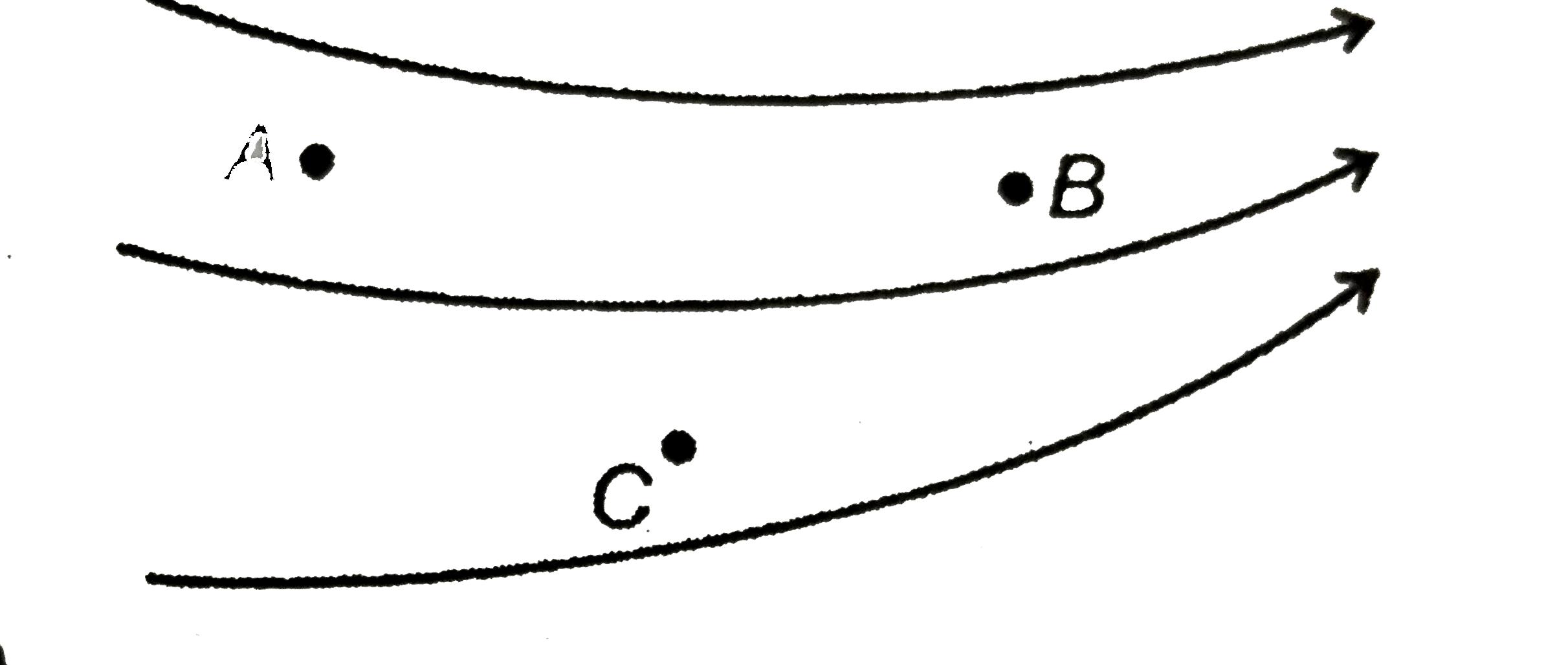A small test charge is released at rest at a point in an electrostatic field configuration . Will it travel along the field line passing through that point ?
As the test charge is placed in electrostatic field, it applies an electrostatic force. The direction of the force will be along the tangent of the electric field line. The electric field line gives the direction of the acceleration, but the locus of the particle is defined by the velocity of the particle. If the electric field lines are straight lines then the charged particle will move along the electric field lines, whereas when the electric field lines are curved the charged particle moves along the tangent to the curved lines.
Topper's Solved these Questions
- ELECTROSTATIC POTENTIAL AND CAPACITANCE Book:MODERN PUBLICATIONChapter:ELECTROSTATIC POTENTIAL AND CAPACITANCE Exercise:NCERT FILE Solved (Additional Exercises) (Answer the following)
Explore 4 Videos
- ELECTROSTATIC POTENTIAL AND CAPACITANCE Book:MODERN PUBLICATIONChapter:ELECTROSTATIC POTENTIAL AND CAPACITANCE Exercise:NCERT FILE Solved (Exemplar Problems) (Very Short Answer Type Questions)
Explore 5 Videos
- ELECTROSTATIC POTENTIAL AND CAPACITANCE Book:MODERN PUBLICATIONChapter:ELECTROSTATIC POTENTIAL AND CAPACITANCE Exercise:NCERT FILE Solved (Additional Exercises)
Explore 23 Videos
- ELECTROMAGNETIC WAVESBook:MODERN PUBLICATIONChapter:ELECTROMAGNETIC WAVESExercise:CHAPTER PRACTICE TEST
Explore 14 Videos
- MAGNETISM AND MATTERBook:MODERN PUBLICATIONChapter:MAGNETISM AND MATTERExercise:CHAPTER PRACTICE TEST FOR BOARD EXAMINATION
Explore 16 Videos
Similar Questions
Answer carefully:
(a) Two large conducting spheres carrying charges Q1 and Q2 are brought close to each other. Is the magnitude of electrostatic force between them exactly given by Q1Q2/4πε0r2, where r is the distance between their centers?
(b) If Coulomb’s law involved 1/r3 dependence (instead of 1/r2), would Gauss’s law be still true ?
(c) A small test charge is released at rest at a point in an electrostatic field configuration. Will it travel along the field line passing through that point?
(d) What is the work done by the field of a nucleus in a complete circular orbit of the electron? What if the orbit is elliptical?
(e) We know that electric field is discontinuous across the surface of a charged conductor. Is electric potential also discontinuous there?
(f) What meaning would you give to the capacitance of a single conductor?
(g) Guess a possible reason why water has a much greater dielectric constant (= 80) than say, mica (= 6).
View SolutionA Point Charge In An Electric Field
View Solution
Knowledge Check
S1: When a positively charged particle is released in an electric field , in its subsequent motion,it may or may not move along the electric field line passing through the point it has been released.
S2: In electrostatic, conductors are always equipotential surfaces.
S3: The flux through a closed Gaussian surface is non-zero. The electric field at some point on the Gaussian surface may be zero.ATTFBFTFCTTTDFFFA, B and C are three points in an electrostatics field. The electric potential is maximum at
 AABBCCDSame at all three points
AABBCCDSame at all three pointsA protons of mass m charge c is released form rest in a uniform electric field of strength E .The time taken by it to travel a distance d in the field is
A√2demEB√2dmEeC√2dEmeD√2dEedm
Equipotential lines arising from a static charge distribution has been shown in a certain region of space. (a) Draw the electric field lines starting from point A (b) If a charge is released at A, will it move along the field line passing through A? (c) How much work is done by the electric force if a charge moves from B to C? Is the knowledge of path important in this calculation?

View SolutionA proton and an electron are placed in a uniform electric field. Which of the following is correct?
View Solution(a) Consider an arbitary electrostatic field configuration. A small test charge is placed at a null point (i.e, where →E=0) of the configuration. Show that the equillibrium of the test charge is necessarlly unsutable.
(b) Verify this result for the simple configuration of two charges of the same magnitude and sign placed a certain distance apart.
View SolutionTwo tiny spheres carrying charges 1.5μCand2.5μC are located 30 cm apart. Find the potential and electric field:
(a) at the mid-point of the line joining the two charges, and
(b) at a point 10 cm from this mid-point in a plane normal to the line and passing through the mid point.
View SolutionSTATEMENT -1 : When a charged particle is released from a rest in a region of electric field ,its path will represent the electric field lines in the region.
and
STATEMENT-2 : The force experienced by the charged particle will be along a tangent drawn to the electric fieldline at a point.
View Solution

